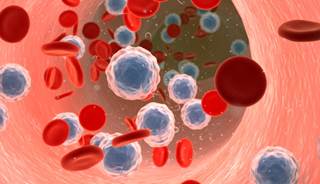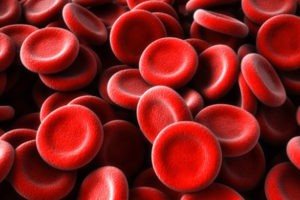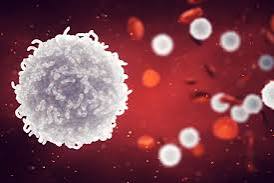
Recently Diagnosed or Relapsed? Stop Looking For a Miracle Cure, and Use Evidence-Based Therapies To Enhance Your Treatment and Prolong Your Remission
Multiple Myeloma an incurable disease, but I have spent the last 25 years in remission using a blend of conventional oncology and evidence-based nutrition, supplementation, and lifestyle therapies from peer-reviewed studies that your oncologist probably hasn't told you about.
Click the orange button to the right to learn more about what you can start doing today.
- You are here:
- Home »
- Blog »
- Multiple Myeloma »
- Complete blood count (CBD) Myeloma Diagnostics
Complete blood count (CBD) Myeloma Diagnostics

Diagnostic testing for multiple myeloma made me feel like a pincushion. A complete blood count (CBC) however, not only gives the Dr. and patient both, a great deal of information, it speaks directly to two of the most common symptoms- fatigue and infection in the form of red blood cells (anemia) and white blood cells (infection).
Blood is made up of water, proteins, nutrients, and living cells. A CBC tells your cancer care team about the cells in your blood. It measures 3 basic types of blood cells:
- Red blood cells
- White blood cells
- Platelets
Each of these cells has a special purpose. And each can be harmed by cancer and cancer treatments.
Red blood cells (RBCs)
RBCs carry oxygen to and carbon dioxide away from the cells in your body. The CBC measures red blood cells in many ways, but the simplest measure is either
Hemoglobin (Hgb), the part of each RBC that carries iron
or
Hematocrit (Hct), the percent of RBCs in the blood
When the Hgb and Hct values fall too low, it’s called anemia (uh-NEE-me-uh).
Platelets (Plts)
Platelets help control bleeding. You may bruise or bleed easily when your platelet levels are low. The risk of bleeding goes up when platelet levels drop below 20,000.
When your platelet count is low, your health care team may call it thrombocytopenia (throm-bo-SY-tuh-PEEN-e-uh).
White blood cells (WBCs)
WBCs fight infection. There are many types of white blood cells and each fights infection in a special way.
The most important infection-fighting WBC is the neutrophil (NEW-truh-fil). The number doctors look at is called your absolute neutrophil count (ANC). A healthy person has an ANC between 2,500 and 6,000.
The ANC is found by multiplying the WBC count by the percent of neutrophils in the blood. For instance, if the WBC count is 8,000 and 50% of the WBCs are neutrophils, the ANC is 4,000 (8,000 × 0.50 = 4,000).
When the ANC drops below 1,000 it is called neutropenia (new-truh-PEEN-e-uh). Your doctor will watch your ANC closely because the risk of infection is much higher when the ANC is below 500.
What are the risks and benefits of a complete blood count test?
Benefits:
- Disease Monitoring: A CBC helps in monitoring the levels of different blood cells. Myeloma can affect the bone marrow, leading to abnormalities in blood cell production. Changes in the levels of red blood cells, white blood cells, and platelets can indicate the progression of the disease.
- Treatment Evaluation: For myeloma patients undergoing treatment, regular CBC tests can help assess the effectiveness of the treatment. Improvements or declines in blood cell counts may inform healthcare providers about the need for adjustments to the treatment plan.
- Detection of Complications: Myeloma and its treatments can sometimes lead to complications such as anemia, infections, or bleeding disorders. CBC results can help identify these complications early, allowing for prompt intervention.
- Baseline Assessment: Establishing baseline blood cell counts before initiating treatment provides a reference point for comparison during and after treatment. It helps healthcare providers track changes over time.
Risks:
- False Positives/Negatives: While CBC is a valuable tool, it may not provide a complete picture of myeloma progression. Other specialized tests, such as bone marrow biopsy or imaging studies, are often needed for a comprehensive evaluation.
- Overreliance on CBC Alone: Relying solely on CBC results may not capture all aspects of myeloma, potentially leading to an incomplete understanding of the disease status. Additional tests and assessments are usually necessary.
- Treatment Decisions Based Solely on CBC: Making treatment decisions based solely on CBC results without considering other clinical and laboratory findings may not be appropriate. A comprehensive approach, including other tests and assessments, is essential.
- Potential for Anxiety: Abnormal CBC results can cause anxiety for patients. It’s important for healthcare providers to provide clear explanations of the results and their implications, as well as to address any concerns the patient may have.
Have you been diagnosed with multiple myeloma? What symptoms? What stage? Let me know.
David.PeopleBeatingCancer@gmail.com
Thank you,
David Emerson
- MM Survivor
- MM Cancer Coach
- Director PeopleBeatingCancer
Multiple Myeloma Workup
“Blood Studies
Perform a complete blood count (CBC) to determine if the patient has anemia, thrombocytopenia, or leukopenia. The CBC and differential may show pancytopenia. The reticulocyte count is typically low. Peripheral blood smears may show rouleau formation.
The erythrocyte sedimentation rate (ESR) is typically increased. Coagulation studies may yield abnormal results…”



